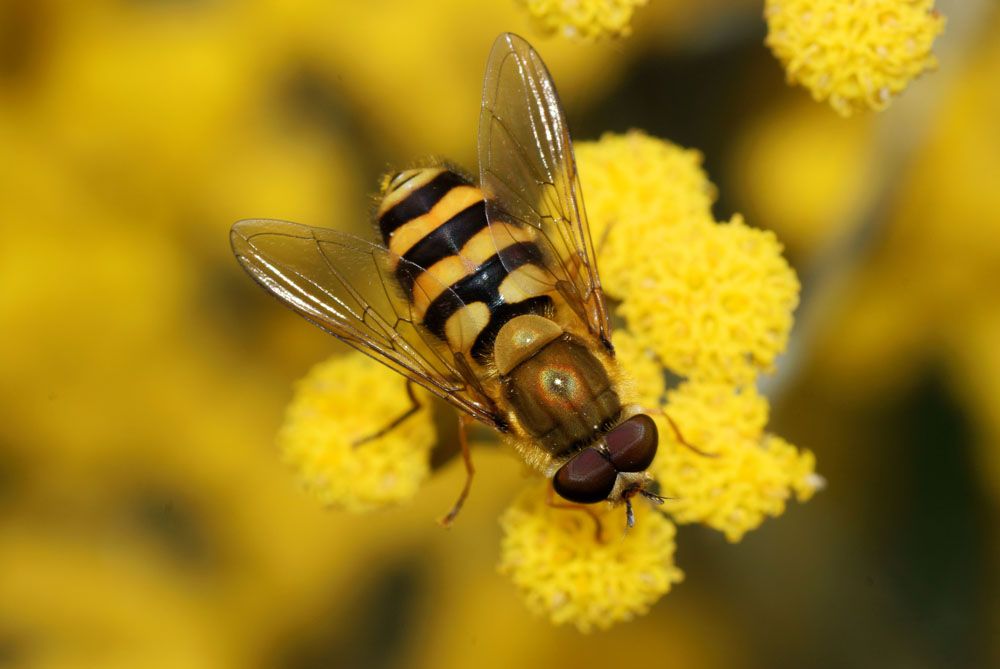
Syrphid Flies – Flower Flies – Hover Flies – Syrphidae
Syrphid Flies
Family: Syrphidae
Common Name: Syrphid Flies, Flower Flies, Hover Flies
Appearance: Depending on the species, Hoverflies are 4-25 mm long insects having robust to the slender body. They have a wider head almost equal to or greater than the width of the abdomen and small distinct antennae. They have black body color with a yellow, orange or white band or stripes giving them a bee or wasp-like look. Some species have green, brown, or metallic blue color also.
Host Plants or Food: Nectar, Pollen, Aphids, Small Caterpillars, Ants, Froghoppers, Mites, Mealybugs, Scales, Psyllids, and other soft-bodied insects
Territory: North America, Central America, Australia, UK, Eastern Russia.
Mode of Damage: Beneficial Garden Insect
Habits and Life History:
Syrphid flies are also called Hoverflies as they are seen hovering around the flowers feeding on their pollen and nectar and contributing to pollination. So they also act as pollinating agents along with their role in biological control.
Syrphid flies are found in most biomes except those with extreme conditions such as deserts and Antarctica. Adults mostly feed on honeydew, nectar, and pollen, so seen mostly around flowers.
While Larvae are mostly predacious and insectivores and feed on aphids and other soft-bodied insects. One larva almost feeds on 100-400 aphids before pupation, so they are beneficial biocontrol agents.
Syrphid flies undergo four life stages. The female lays eggs near the colonies of prey so that when larvae come out, they can feed on the insects.
The larva then develops through three instars before it pupates. The last instar migrates towards some place where it remains inactive for a long time.
Pupation mostly needs high humidity to occur, so the larva moves to a place having relatively high humidity like damp soil or soil litter where pupation occurs, and later pupa develops into an adult.
Egg to adult development takes almost 2-4 weeks, and they produce 5-7 generations per year.
